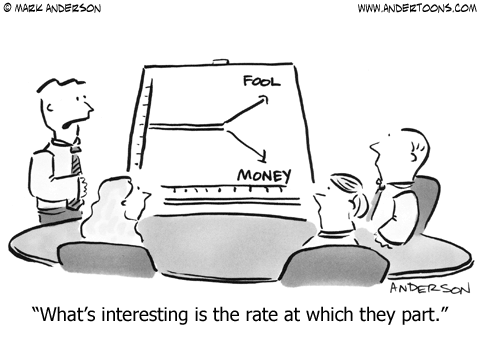 APY to APR Calculator
APY to APR Calculator

Enter the APY along with the compounding frequency & this calculator will automatically return the annual percentage rate interest associated with the APY. Click here for more in-depth usage instructions.
Today's Columbus Savings Rates
The following table shows current rates for savings accounts, interst bearing checking accounts, CDs, and money market accounts. Use the filters at the top to set your initial deposit amount and your selected products.
Usage Instructions
The following converter allows you to enter the APY & how frequency interest is compounded to figure out what APR is associated with it. For your convenience, a table listing compounding frequencies and rates appears below the calculator. When you enter any figure the calculator will automatically return the APR.
- First enter the APY in percent. Some banks also refer to this as the effective annual rate (EAR).
- Next enter how frequently interest compounds each year. Common compounding frequencies appear in the drop down.
- daily = 365, weekly = 52, biweekly = 26, semimonthly = 24, monthly = 12, bimonthly = 6, quarterly = 4, semiannual = 2, annual = 1
- If you would like to use a compounding frequency not shown in the drop down, select custom in the drop down & then enter a custom compounding frequency in the box below it.
Click on CALCULATE and you’ll instantly see the annual percentage rate interest associated with the above APY.
Understanding APR vs APY
Financial institutions often show rates expressed as an annual percentage rate (APR) or annual percentage yield (APY). APR is the basic rate at which interest compounds, however the frequency of compounding must also be factored in to figure out the APY.
If interest was compounded annually then APR & APY would be the same exact number. Whenever interest is compounded more frequently, the APY typically* becomes significantly larger than the APR because the interest earns additional interest on itself throughout the year.
* There are two historically rare exceptions to this:
- Negative interest rates: when interest rates are negative then more frequent compounding makes the rate of change larger in absolute terms, though since it is a negative number it is technically a smaller number.
- Frequently compounding small numbers: it the interest rate is rather low (like a small fraction of a percent) & interest compounds more frequently (e.g. continuous compounding at sub-nanosecond accrual vs discrete time intervals) then sometimes the absolute return can be lower by repeatedly multiplying two infinitesimal numbers together.
APY's Corresponding APR for Various Compounding Frequencies
The following table shows the corresponding APR associated with a set compounding frequency for a range of APYs.
| APY | Continuous | Daily | Weekly | Monthly | Quarterly | Semi-annual | Annual |
|---|---|---|---|---|---|---|---|
| 1% | 0.99503% | 0.995046648326281% | 0.9951282924321347% | 0.9954457372153946% | 0.9962717257284481% | 0.99751242241779% | 1% |
| 2% | 1.98026% | 1.9803164489521352% | 1.9806398390715962% | 1.981897562304269% | 1.9851726292815286% | 1.990098767241566% | 2% |
| 3% | 2.95588% | 2.955999915440932% | 2.9567205014291% | 2.9595237267644237% | 2.96682871109315% | 2.9778313018443914% | 3% |
| 4% | 3.92207% | 3.9222820440170114% | 3.9235507875932107% | 3.9284877386386974% | 3.9413626195875295% | 3.9607805437114063% | 4% |
| 5% | 4.87902% | 4.879342524642616% | 4.881306056181067% | 4.888948540378024% | 4.908893771615741% | 4.939015319191986% | 5% |
| 6% | 5.82689% | 5.827355942028878% | 5.8301567106710195% | 5.841060678411658% | 5.86953846746372% | 5.912602819739998% | 6% |
| 7% | 6.765865% | 6.766491967326482% | 6.770268384637923% | 6.784974464886329% | 6.82341000072455% | 6.881608655772009% | 7% |
| 8% | 7.6961% | 7.696915540755356% | 7.701802118409518% | 7.720836132004116% | 7.7706187633094% | 7.846096908265299% | 8% |
| 9% | 8.61777% | 8.618787046000055% | 8.624914527603433% | 8.648787979364059% | 8.711272345856447% | 8.806130178211014% | 9% |
| 10% | 9.53102% | 9.532262476476205% | 9.539757964011297% | 9.568968514684517% | 9.645475633778045% | 9.761769634030326% | 10% |
| 11% | 10.436% | 10.437493594181223% | 10.446480669217895% | 10.481512588262287% | 10.57333089917547% | 10.713075057054766% | 11% |
| 12% | 11.33287% | 11.33462808142105% | 11.345226921359508% | 11.386551521499655% | 11.49493788883209% | 11.660104885167266% | 12% |
| 13% | 12.22176% | 12.223809685720898% | 12.23613717538976% | 12.28421322981168% | 12.410393908488171% | 12.602916254692964% | 13% |
| 14% | 13.10283% | 13.105178358463032% | 13.119348197185499% | 13.174622340208142% | 13.319793903583843% | 13.541565040626224% | 14% |
| 15% | 13.97619% | 13.97887038737311% | 13.994993191812544% | 14.057900303824056% | 14.223230536648845% | 14.476105895272173% | 15% |
| 20% | 18.232155% | 18.236710019882917% | 18.26415571209683% | 18.37136459967743% | 18.654055756842247% | 19.08902300206643% | 20% |
| 25% | 22.314358% | 22.32117748663798% | 22.362301617292513% | 22.52311814580734% | 22.948505376225636% | 23.60679774997898% | 25% |
Formulas for Calculating Compound Interest
Calculating Discrete Compounding
FV = P(1 + r/m)m t
where:
- FV = Future value
- P = Principal
- r/m = Interest rate
- r = rate of interest, expressed as a decimal
- m = The number of compounding periods in a year
- mt = Time period, consisting of
- m = The number of compounding periods in a year
- t = The compounding term in years
Calculating Coninuous Compounding
Continuous compounding leverages the natural logarithm (2.71828), represented by the letter e.
FV = P * er t
Related Tools
We also offer a savings calculator to calculate interest earned and a separate tool to convert APR to APY.

Change privacy settings
